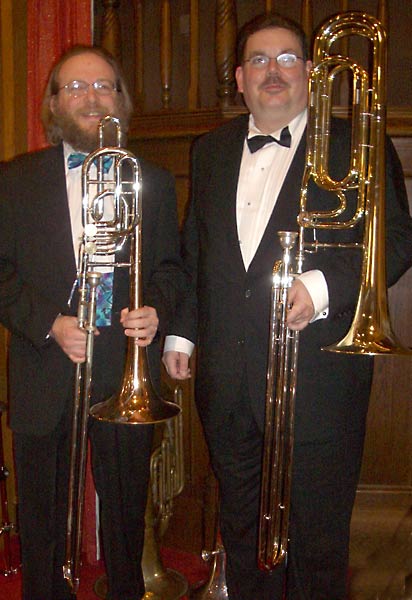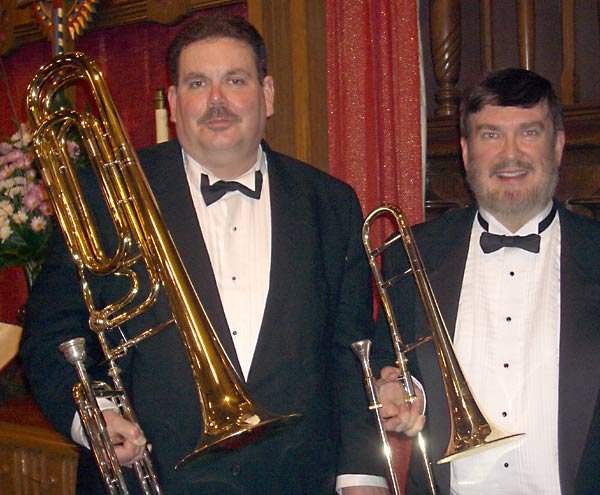|
Don Dresser and Ken Leginchin pause for a picture before the start of
the Minneapolis Trombone Choir concert. Don, at left, displays his Olds
bass trombone, whose fundamental pitch is an octave higher than that of
Ken's contrabass trombone. Despite the difference in tubing length, and
despite having a bore (inner slide diameter) of 0.635" vs. 0.562"
for the bass trombone, the bell sizes are nearly the same. The contrabass
trombone bell diameter is 10 inches, and bass trombones typically have
bell diameters between 9.5 inches (as shown here) and 10.5 inches.
Whereas higher-pitched trombones have two legs to the slide, the BB-flat
contrabass trombone has four, arranged like a double slide. The slide
positions are basically the same as on the bass trombone, despite the
contrabass' double length, because changing the slide position on the
contrabass moves four slide tubes, rather than two. The relation of the
slide positions to the end of the bell is different on these two instruments
because the bell of this model contrabass is positioned farther toward
the rear for better weight balance.
A potential problem with the double-slide instrument is emptying the
moisture that collects in the slides. Ken's instrument was made with a
water key on one of the slides, but moisture collects in both slides.
The instrument is too unwieldy to rotate like a French horn to remove
moisture, so Ken added a second water key, on the other slide.
This contrabass trombone has a single rotary valve, which lowers the
pitch by a perfect fourth, performing the same function as one of the
two valves on the bass trombone. The double slide is only long enough
to reach 6th position, so the valve is essential for playing B natural
or low E natural, as well as for the extended low range.
This contrabass trombone is played with a tuba mouthpiece, which facilitates
playing the low notes. However, the instrument has much less resistance
than a tuba, so Ken uses a mouthpiece with a small throat that was made
for an F tuba, to provide some resistance. Despite this, Ken reports that
the contrabass trombone requires more air than his large tuba. |
 |

